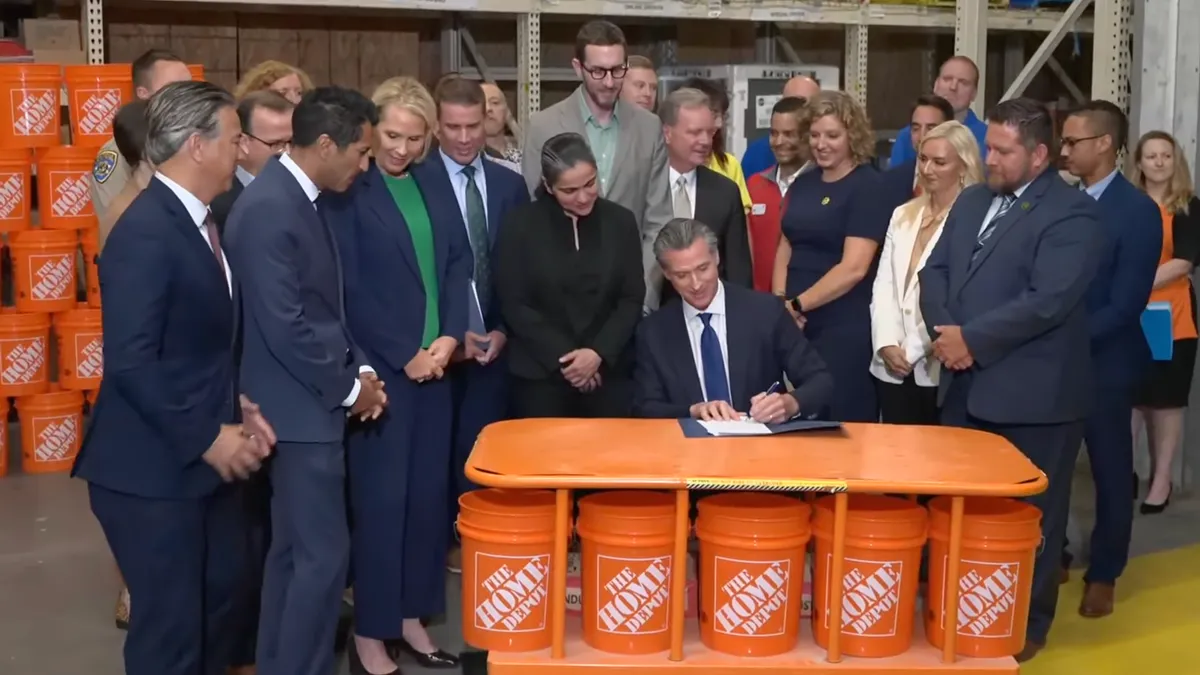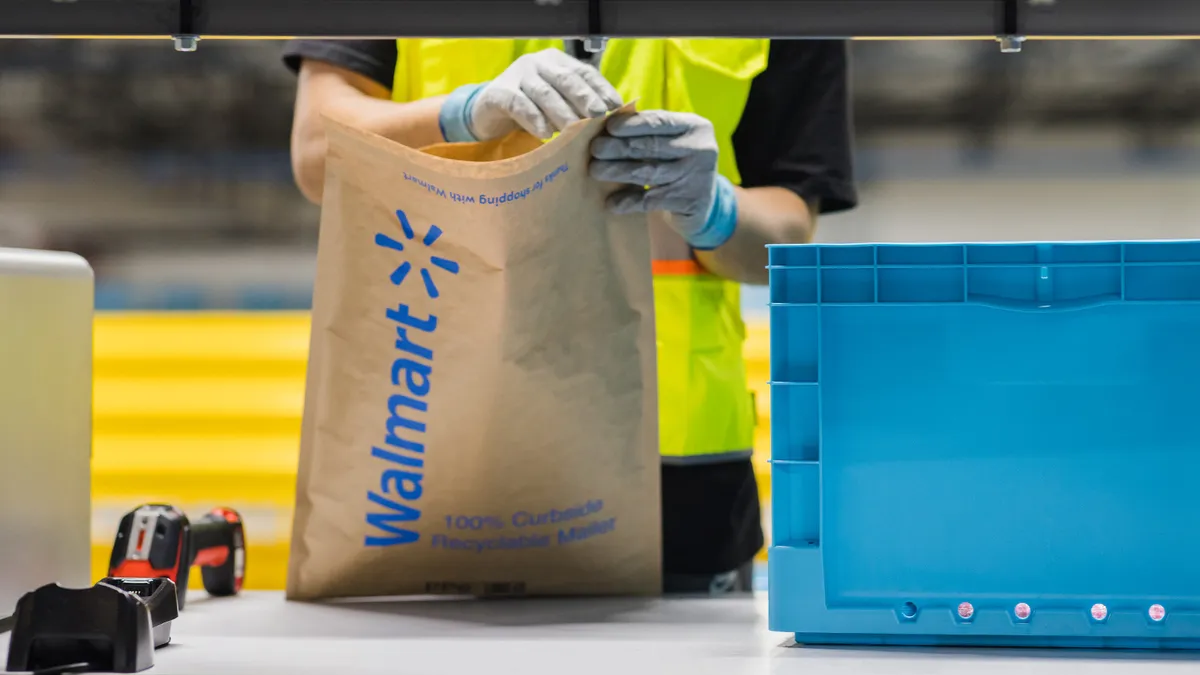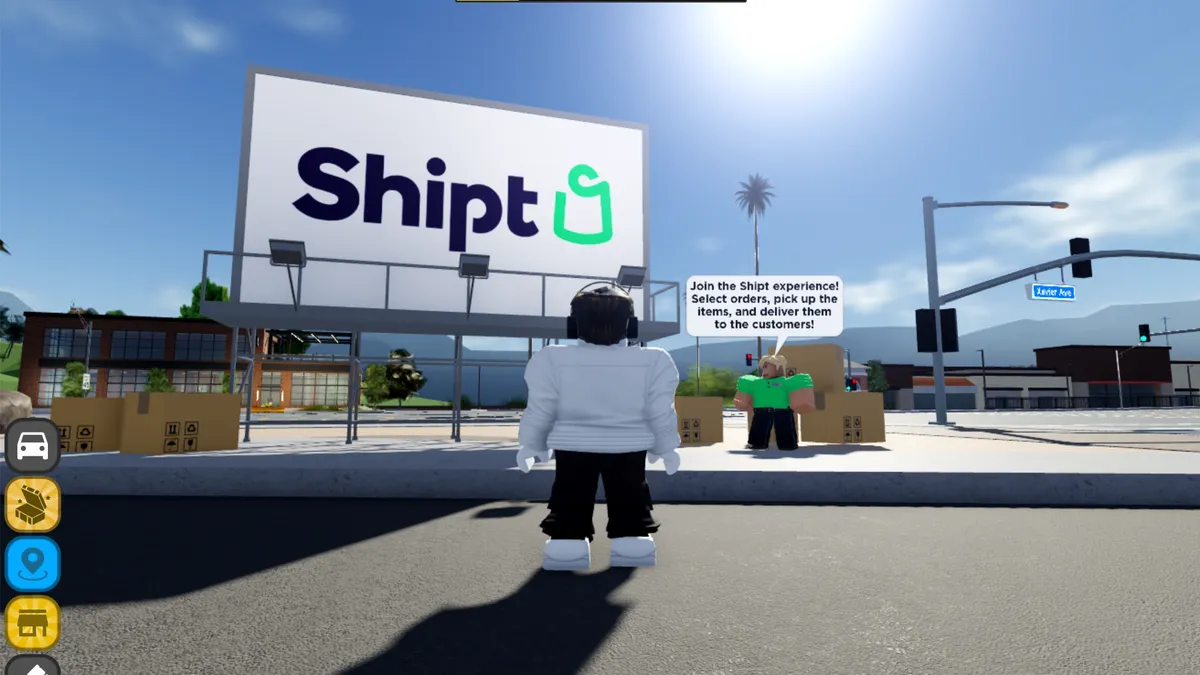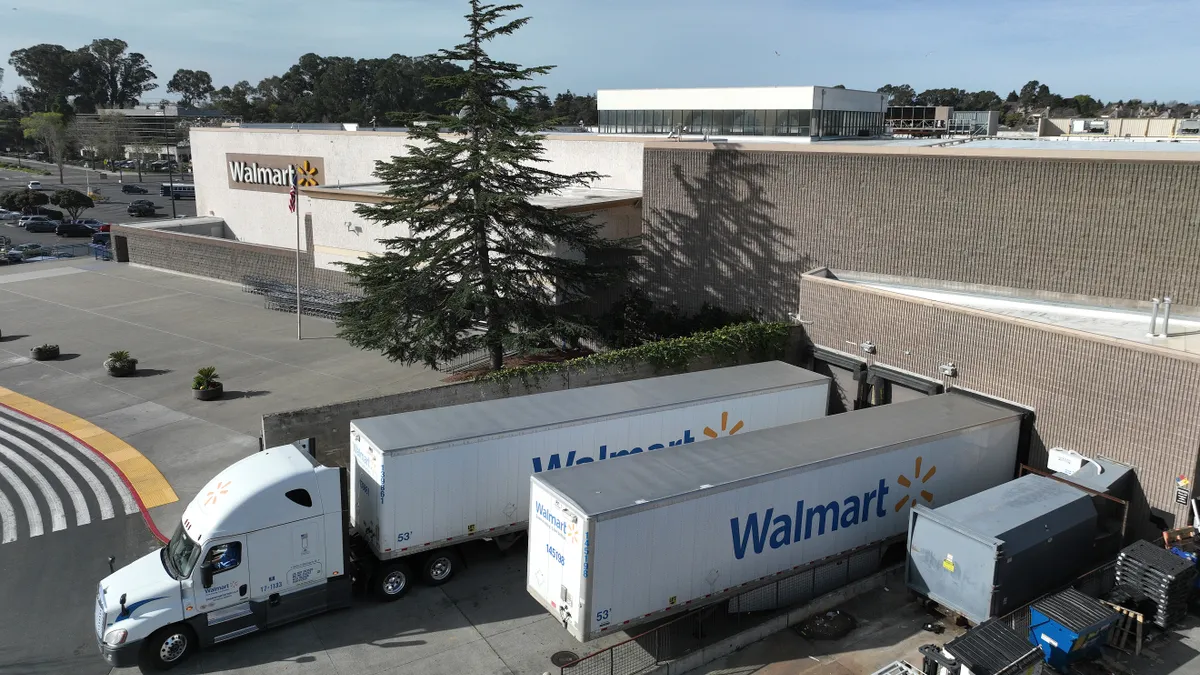With Gov. Gavin Newsom’s signing of a package of 10 bills last week, California has a new suite of tools to fight organized retail crime and other property theft, while holding on to criminal justice reforms that the governor says have clamped down on recidivism and saved the state billions.
According to Newsom, the California Retailers Association was instrumental in developing the package and getting it to his desk, or, more accurately, a makeshift work surface set up at a Home Depot location in San Jose. CRA President Rachel Michelin, speaking alongside the governor and several other stakeholders, said work on the legislation was cooperative, but that the problem was brought to legislative leaders and law enforcement by retailers.
“We worked collaboratively. And I'll say I was able to rethink the way I approach this issue, and I think I was able to have them rethink how they approach this issue,” Michelin said. “Retailers have never been about mass incarceration or that type of mentality. We've always wanted to be part of the solution.”
What the new laws do
The new legislation tackles not just retail theft, but also other property theft and damage, including auto theft. Broadly speaking, related to retail crime, the law focuses on online marketplaces and repeat offenders, gives law enforcement and prosecutors more leeway and puts cargo theft in focus.
The National Retail Federation and Retail Industry Leaders Association, which have both focused on retail crime in recent years, declined to comment on the new laws, referring Retail Dive to the CRA.
Specifically, per a fact sheet from the governor’s office, under the legislation:
- Prosecutors can bundle the value of stolen property from different retailers or jurisdictions to reach the $950 “felony grand theft” threshold. Thefts and related offenses from different counties can be tried together.
- A person can be arrested for shoplifting even if an officer didn’t witness the act.
- Probation for shoplifting or petty theft is extended from one year to two.
- Courts can issue “retail theft restraining orders” that would ban anyone “convicted of organized retail theft, shoplifting, theft, vandalism, or assault of a retail employee from entering the establishment for up to two years.”
- Retailers can’t be cited or fined for repeated theft reports.
- Anyone “possessing more than $950 of stolen goods with intent to sell, exchange, or return the goods” now faces up to three years in jail, and prosecutors needn’t prove the defendants knew those goods were stolen.
- Sentencing is enhanced for “large-scale resale of property.”
- Online marketplaces must collect information on “high-volume third-party sellers."
- The state’s existing organized retail theft law and its regional property crimes task forces, which were scheduled to sunset, were made permanent.
- Cargo theft, as related to retail crime, now includes railroads, according to Michelin.
“All of these things in this package is going to help retailers, law enforcement and district attorneys be able to provide the consequences for the behaviors that we need to make sure people don't continue doing this behavior, which is what we've always needed,” Michelin said.
What the new laws don’t do
The new legislation doesn’t go as far as Prop 36, a referendum that California voters will consider in November, in stiffening penalties for retail theft.
The detail gaining the most attention —and even some notoriety in the 2024 presidential election — is that California now categorizes thefts of goods worth less than $950 as misdemeanors. Contrary to popular belief, that limit is among the lowest in the nation, according to a July report on retail crime from the Little Hoover Commission, an independent oversight agency in California.
Prop 36 would recategorize lower-level thefts as a felony for people with prior convictions and allow for more extensive prison sentences.
That comes with some consequences, according to Newsom and others. Prop 36 could add “tens of millions of dollars” to local criminal justice system costs each year, while eliminating savings associated with existing law, according to a fiscal analysis of Prop 36 conducted by the state’s nonpartisan Legislative Analyst’s Office. Worse, though, it interferes with successful criminal justice reforms that have not only saved money but also helped people turn away from crime, Newsom said.
Michelin didn’t immediately respond to questions about whether the CRA supports Prop 36, as many individual retailers in the state do.
“Prop 36 takes it back to the 1980s war on drugs. Mass incarceration. Promotes a promise that can't be delivered,” Newsom said. “I would ask those that support it, particularly mayors, where are the treatment slots? Where are the beds? ... That initiative has nothing to do with retail theft.”
Numbers remain elusive
Both Gov. Newsom and CRA’s Michelin characterized the slate of new laws as just a portion of work that is ongoing. Left unmentioned by everyone gathered for the bill signing is the financial cost of retail crime for the state’s retailers.
Since a Retail Dive report unearthing an error in a special report on retail crime from the NRF, which subsequently retracted a key statistic, the industry has shied away from quantifying the impact. In its report released last month, the Little Hoover Commission, anticipating that penal code and other changes in last week’s legislation would become law, focused on the need for better data. The commission noted that it couldn’t find data on organized retail crime, which is a focus of the industry.
The commission recommends that state lawmakers:
- Require and fund data collection “to better understand the circumstances around crime and the people involved in it,” including improved crime statistics; demographic data and circumstances surrounding retail crime offenses; law enforcement response; prosecutors’ actions and their consequences; “and the offender’s rehabilitation, reentry, and recidivism,” among other details.
- Work with universities and nonpartisan researchers to study retail theft to “fill existing knowledge gaps and guide the development of future solutions.”
The report also notes that reported retail theft is even with rates from the 2010s and lower than previous years; that little data is available; and that shrink rates reported by the industry “have slightly increased over the past decade.” Nationally, the NRF’s annual reports show that shrink has remained steady for at least seven years.
“California needs comprehensive data collection and analysis to better tackle retail theft and its impacts,” the commission also said. “California’s Department of Justice has made a fine start in collecting criminal-justice related data, but this effort needs to be expanded significantly.”



















